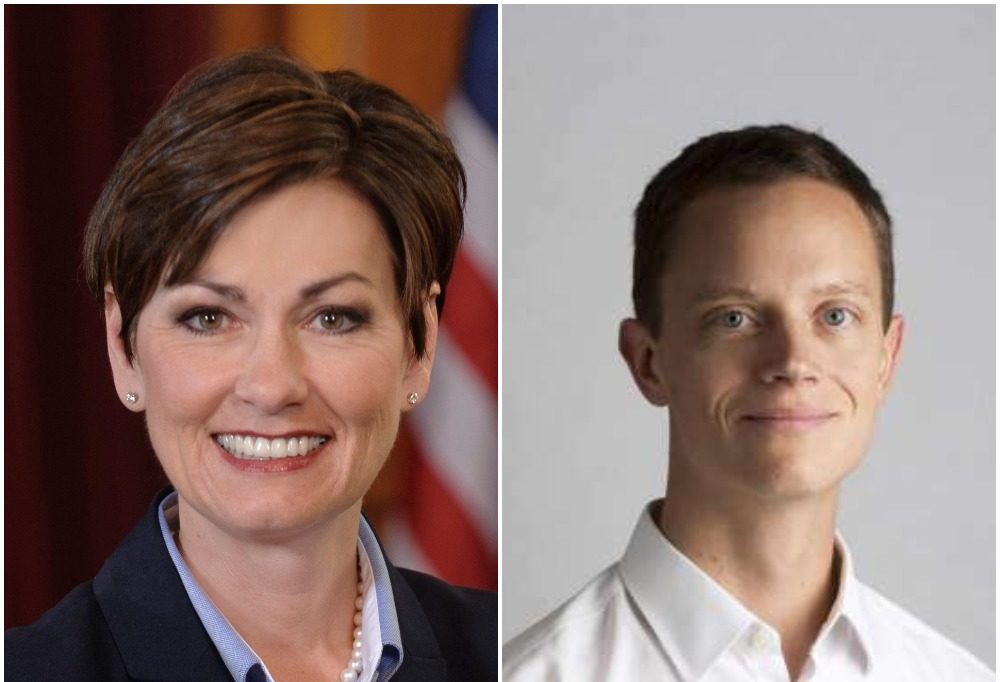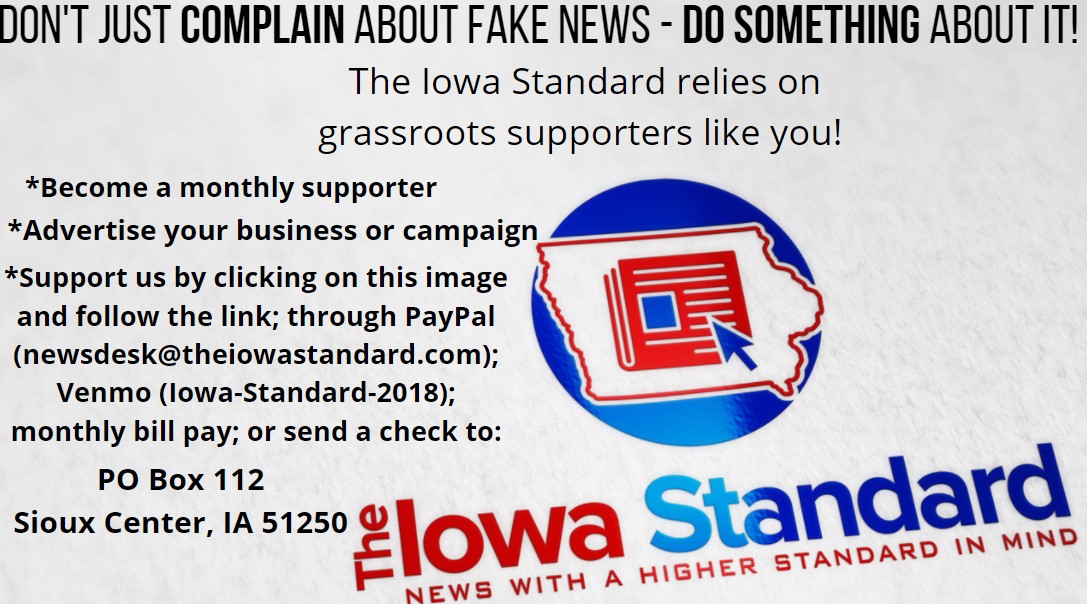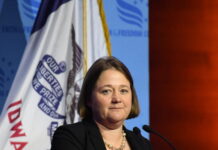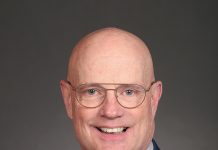Press release from Gov. Reynolds’ office:
Today, the Auditor released a report on a special investigation of the “Step Up, Stop the Spread” public service announcement campaign that occurred in November 2020, the height of the Coronavirus (SARS-CoV-2), or COVID-19, Pandemic in Iowa. The campaign was designed to raise public awareness in order to slow the spread of COVID-19.
“I’m proud of the Step Up, Stop the Spread” public service announcement,” Gov. Reynolds said. “I felt it was important for me and other leaders to address Iowans during the height of the pandemic. And the law clearly allows it.”
In his report, the Auditor claims the Governor mishandled CARES Act dollars by using those funds for video advertisements containing the likeness, voice, or name of the Governor in violation of Iowa Code section 68A.405A.
That statute reads, in part:
“Except as provided in sections 29C.3 and 29C.6, a statewide elected official or member of the general assembly shall not permit the expenditure of public moneys under the control of the statewide elected official or member of the general assembly, including but not limited to…”
The auditor’s report ignores the opening clause: “Except as provided in sections 29C.3 and 29C.6.” That is a significant error, as 29C.6 relates to the powers and authority of the Governor during a public health disaster emergency.
The Step Up, Stop the Spread campaign promoted social distancing and mask-wearing in November 2020, which was the peak of positive cases of COVID-19 in Iowa. Hospitals and health care facilities were filling with patients being treated for COVID-19. And significantly, the Governor’s Public Health Proclamation of Disaster Emergency mandated (in certain situations) mask-wearing and required social distancing.
Promoting the requirements and recommendations of a disaster proclamation in a public awareness campaign is a clear example of the public-emergency exemption in Iowa’s image-and-likeness statute. And in case of any confusion, Section 29C.6(10)–which, again, is specifically mentioned in section 68A.405A– provides for the use of “all available resources of the state government as reasonably necessary to cope with the disaster emergency and of each political subdivision of the state.”
“Auditor Sand didn’t once ask to meet with our team regarding his concern or his investigation. If he had, we would have pointed him to this essential part of the law that he clearly missed,” said Chief of Staff Sara Craig.
Any competent reading of the plain language of state code would have acknowledged the role of the Governor in promoting an emergency order. Neither the Governor’s Office nor the Iowa Ethics & Campaign Disclosure Board were consulted prior to the issuance of Auditor Sand’s report. If that had happened, anyone within those offices could have directed the Auditor to the plain language of Iowa’s image-and-likeness statute and pointed out that, during a disaster emergency, the Governor may address Iowans in a public service announcement.
From Auditor Rob Sand’s report:
Governor Reynolds spent over $500,000 of CARES Act funds for the “Step Up, Stop the Spread” media campaign. Of that, $152,585 was paid for advertisements on TV, radio and the internet that included her image, voice and title.
“That violates Iowa Code Section 68A.405A, Iowa’s law prohibiting self-promotion with public moneys, which Gov. Reynolds signed in 2018,” Sand’s report states. “Another $17,00 was spent producing the videos, which may or may not violate the statute.”
Sand’s report also recommends the legislature consider expanding Code restriction to include elected officials of all governmental subdivisions, such as cities, counties and school districts.
At issue, according to Sand’s report, is a one-minute video that begins with Reynolds speaking on camera while her name and title are displayed. Halfway through the video she appears again with her name displayed and it ends with Reynolds speaking on camera a third time. In all, she appears in the video for 10 seconds.
Sand’s report acknowledges the newspaper ads did not violate any law because it did not include the voice, image or name of any statewide elected official in charge of the funds spent.
Sand’s report says that JoAnna Reynolds, a representative of a management organization overseeing IBA, said the IBA “spliced the recording into one message as directed by the Governor’s Office. We also stripped the audio from the TV spot for the radio spot. We only used the Governor speaking for the radio (spot)…we did not use the other people.”
Sand’s report concludes that CARES ACT money was used to air the ad under the Governor’s direction exclusively and was not directed by other entities such as the legislature.












